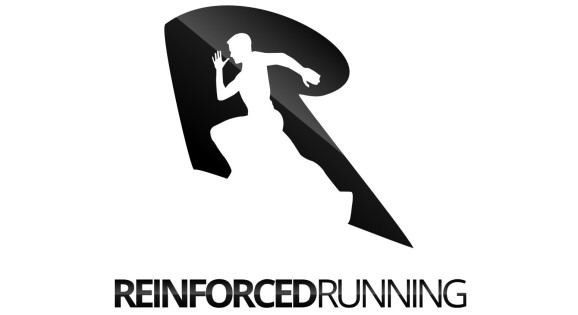How heart rate training is the best way to make logical decisions about your training and progress.
Pacing is the number one reason runner fail to hit their race goals. Now, there is no evidence to my statement, but I’m going to stick with it. Too often training is great, the taper was money, but on race day things go off the rails.
“But, I felt in control,” Diane said to me after her flop of a 13.1-mile race.
“But the last 5 miles turned into a nightmare. It was like she was running backward.”
Diane “went out” 15 seconds faster than planned and held on to that exact pace for almost 10k,
“It felt easy, so I stuck with the pace. I thought I could hold it.”
Diane learned a valuable lesson that day.
You can not trust your perceived effort on race day.
Many factors go into race day.
- Prep and training
- Adrenaline and excitement
- Taper and race day prep
You will feel ready to rock your race. But, no matter good you feel, you can not outrun your current fitness.
Poor pacing is to blame for the majority of subpar race performances. It’s not because you don’t know that pace is important. It’s is from a lack of feedback and objective data.
Enter Your Heart Rate
Heart rate is valuable information to collect while running. During training, you will begin to see patterns. You will find what makes your heart skyrocket or leaves you feeling comfortable. Maybe your perceived “easy” pace drives your HR higher than you realize. Or maybe you have more in the tank on your speed work days.
The best way to learn is to explore it for yourself. There are a few ways to track your heart rate, but I would recommend grabbing a heart strap or a watch. These elements are not 100% accurate, but they are typically consistent.
Why it’s important to know your HR data
Your HR will tell you if you are getting more fit. Training for improvement is about creating change. Change can happen muscularly, skeptically, and cardiovascularly. Among other things, A runner needs to improve their working capacity by improving the efficiency of the heart.
The heart is just like any other muscle you train. Adaptation will occur from training and recovery. To continue adaption, you need to switch stimulus aka change your workouts.
Your heart rate data will help you understand what stimulus your cardiovascular system receives from a workout.
For example, if you are consistently in the 140 beats per minute (bpm) range every day, you are not changing your stimulous for adaptation.
How the heart adapts.
As you become more fit your resting heart rate and your max heart rate will lower. Fewer bpm will improve your efficiency as a runner.
The heart delivers blood to your muscles through the circulatory system. Blood carries oxygen that you take in through your lungs and provides the oxygen to your muscles.
When your heart gets stronger from training, it will take fewer beats and less energy to deliver the required oxygen to your muscles.
**Important for running**
Stroke volume is the amount of blood that is delivered by each beat of your heart. The more fit you are, the higher your stroke volume. A more fit person can do more harder work for a longer duration.
Keep an eye on your HR to avoid overtraining.
Overtraining is when you don’t give your heart time enough to recover. The tricky part is that your heart does not have nerve endings, so it does not feel sore. Whereas your biceps, for instance, will give you immediate feedback as pain if you did too many curls.
Knowing your HR data can help you understand when you are training too much and too hard. If you are diligent in collecting your HR data, you will know if you resting HR on an easy run is too high.
Heart rate variability is another excellent way to learn about your recovery which is beyond the scope of this article. Read an article here.
Learning to recover during recovery runs
It’s easy to get carried away while training for a goal race. You are out on a run and you feel good. The daydreams start rolling in, and you get fired up. Before you know it, you are damn near race pace and today was an easy day.
Objective HR data can help you pull your reigns. Keeping a run easy is how you recover and adapt.
A huge mistake in inexperienced runners is to push it too hard too often. The prospect of getting faster and improving your pace is exciting, but you need to chill out to sustain training and improve.
How to build a strong heart
Running and training with intensity is a great way to improve your heart. Below is a smart way to approach heart rate training.
Learn your max heart rate to learn your pace
The percentage of your maximum heart rate will dial in your training. Finding your max heart rate flat out sucks, but the means are worth the ends of your long-term training.
Every runner will differ in their max HR. Avoid classic formulas that do not consider your current fitness.
Do this to test your Max HR
2 mile warm up
1 mile @ threshold
800 m @ fast rep pace
30 sec rest
Repeat 800 until your HR will not get higher.
The highest number will be considered your “Max Heart Rate”
Now that you have your Max HR you can learn to stay within your training zones
Calculate your HR Zones for smart training
zone 1 50-60%
zone 2 60-70
zone 3 70 80
zone 4 80-90
zone 5 90-100
Consider 1 walking and 5 sprints.
As a runner, you will spend the majority of the time in HR zones 2-4. Your “recovery” days are zone 2 and your hard training days will be between 3 and 4. I recommend spending no more than three days a week outside of zone 2.
Heart rate training is not the end all be all, but it is a great way to learn objective data about how your body responds to training. You can learn how your body feels overtime, but having the tools can be important to growth as a runner.


